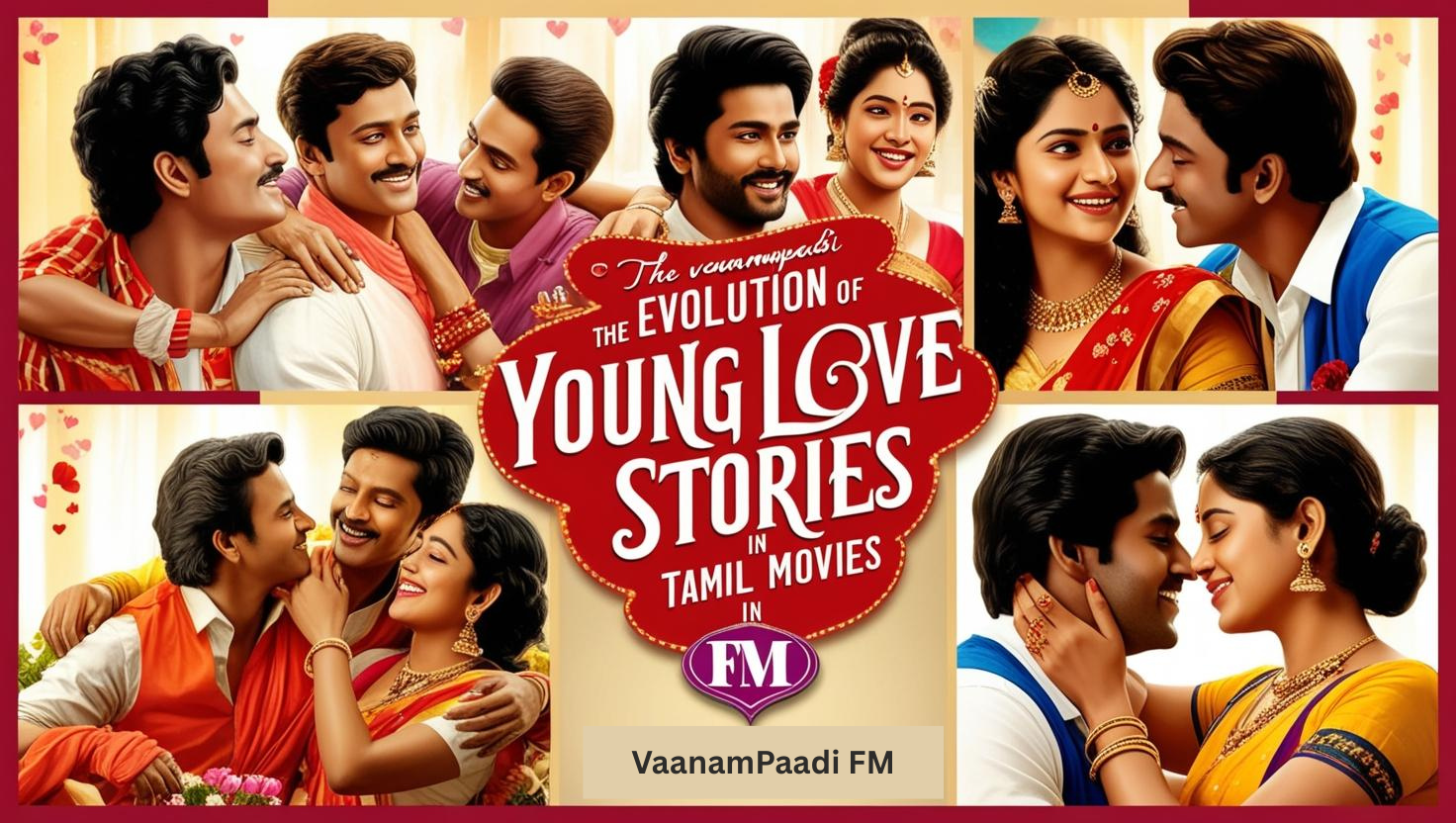Ilamai and Cinema: The Evolution of Young Love Stories in Tamil Movies

Tamil cinema has long been celebrated for its ability to capture the essence of human emotions, with love being the most explored theme. Over the decades, young love stories in Tamil movies have evolved in their portrayal, reflecting societal changes, generational aspirations, and the shifting dynamics of relationships. Let’s take a journey through time to explore how Tamil cinema has showcased youthful romance and how it continues to redefine it for modern audiences.
The Golden Era: Innocence and Simplicity
In the early days of Tamil cinema, love stories were often built around innocence and simplicity. Films like “Kadhalikka Neramillai” (1964) and “Anbe Vaa” (1966) portrayed love as pure and untainted. The protagonists often came from traditional backgrounds, and love was expressed through subtle gestures, poetic dialogues, and soulful songs. These films focused on the emotional depth of love, with characters facing societal or familial challenges while maintaining an air of modesty.
The 1960s and 70s set the stage for romance to be a central theme, using nature and music as backdrops for blossoming love. The focus was less on physical expression and more on emotional connections, making these films timeless classics.
The 80s and 90s: A Blend of Passion and Rebellion
The 1980s marked a shift as Tamil cinema began to explore love stories with more intensity and passion. Films like “Alaigal Oivathillai” (1981) and “Mouna Ragam” (1986) brought forth narratives of forbidden love, inter-caste romance, and the inner struggles of individuals torn between tradition and modernity. These movies began portraying protagonists who were not afraid to defy societal norms for the sake of love.
The 90s took this evolution further, with directors like Mani Ratnam revolutionizing Tamil love stories. Films like “Roja” (1992) and “Kadhalan” (1994) combined youthful energy with societal themes. The 90s also saw the rise of campus love stories, where college life, friendships, and youthful exuberance formed the perfect setting for romantic tales. Songs became the heart of these films, with music directors like A.R. Rahman infusing youthful vibrancy into the love stories.
The 2000s: Urbanization and Realism
As Tamil Nadu witnessed rapid urbanization in the 2000s, love stories in Tamil cinema began to reflect the challenges of modern relationships. Films like “Minnale” (2001) and “Kaakha Kaakha” (2003) showcased urban love stories with a touch of realism. These films were unapologetically bold, portraying love with an openness that resonated with contemporary audiences.
Directors also began to address the complexities of relationships. Movies like “Vaaranam Aayiram” (2008) beautifully captured the journey of love through various phases of life, from teenage crushes to mature relationships. The depiction of young love was no longer limited to boy-meets-girl scenarios but explored themes like heartbreak, long-distance relationships, and personal growth.
The 2010s: Breaking Stereotypes
By the 2010s, Tamil cinema started breaking stereotypes, offering fresh takes on young love. Films like “3” (2012) and “OK Kanmani” (2015) delved into topics like mental health, live-in relationships, and career-driven romance, signaling a more progressive approach. These movies catered to a generation that valued individuality and saw love as a partnership of equals.
The rise of independent filmmakers also brought raw and realistic portrayals of love. “Cuckoo” (2014) and “Pariyerum Perumal” (2018) highlighted love stories set against socio-political backdrops, where young love became a means of challenging oppressive systems.
The 2020s: Diverse Perspectives
In recent years, Tamil cinema has embraced diversity in its depiction of youthful romance. Films like “96” (2018) and “Love Today” (2022) focus on nostalgia, evolving relationships, and the impact of technology on modern love. The younger generation’s struggles with trust, identity, and self-expression are captured with authenticity.
Streaming platforms have also given filmmakers the freedom to explore unconventional narratives. Love stories are no longer confined to heterosexual relationships, as seen in projects that tackle LGBTQ+ themes. The portrayal of young love has become more inclusive, reflecting the changing attitudes of Tamil society.
The Future of Young Love Stories in Tamil Cinema
As Tamil cinema continues to evolve, young love stories will remain a cornerstone of storytelling. With the rise of experimental storytelling and a global audience, we can expect future films to dive deeper into unique perspectives, cultural nuances, and the universal yet deeply personal experience of love.
Whether it’s the poetic charm of old-school romance or the boldness of modern relationships, Tamil cinema’s celebration of young love remains timeless, bridging generations and touching hearts.
Dive into the world of Tamil storytelling with Vaanampaadi FM! From gripping original stories to thought-provoking debates, we bring you the best in Tamil audio entertainment. Whether you love drama, romance, or insightful discussions, there’s something for everyone. Don’t miss out on our latest episodes. Tune in, listen, and let the stories take you away!


